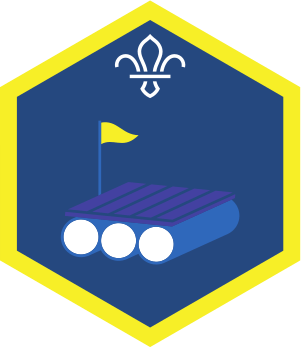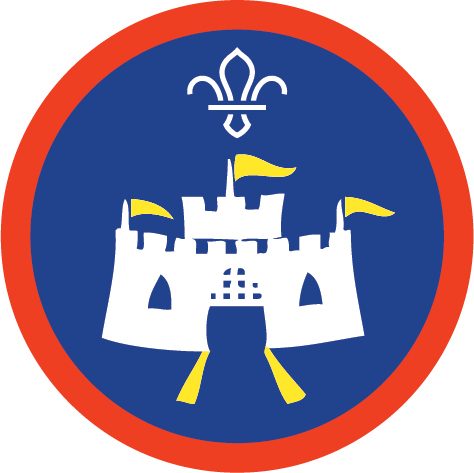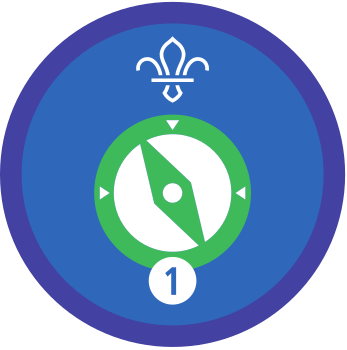Where to next?
You’ll need
- Tables
- Chairs
- Pens or pencils
- A4 paper
- Compass
- Paperclips
- Map of the local area
- Hiking and activity gear, as needed
- Three route cards per group
Before you begin
- This activity should be run across at least three sessions. The first session should be used to plan two 5km walks around the local area, while the next two sessions should be spent walking them.
- Before starting either walk, look over the relevant safety information here.
- Print route cards for the groups to use on their walks. Each group will need three to carry with them.
- Ahead of the planning session, set out tables and chairs for groups to work at, each with writing materials, paper, maps, compasses and the route cards.
- Ahead of the walking sessions, gather any equipment needed that’s been added to activity plans from the planning session. Contact the younger group to see if they can come, ask about any accessibility or travel needs and double check that they’re still able to come the day before. See whether you’ll have enough adult leaders and helpers for the correct ratio of adults to young people.
- Depending on when you can go walking and when the younger group can join you, set dates for the two walks. Check the weather and everyone’s availability too. Bear in mind that the younger group will need lots of notice to arrange travel, check accessibility, run risk assessments and to check on their own group’s availability. It’ll be useful to share as much information as you can about the route, games and activities planned. Between both parties, you’ll need to arrange for enough adult leaders and helpers to supervise the sessions.
- Split everyone into four groups and have them sit at a table together. Explain that they’ll be planning and completing two 5km walks around the local area in two upcoming sessions. One walk will be with a younger group, and each group should come up with an activity to run with the younger group on their leg of the walk. The other walk should have a theme or purpose.
Walk with a purpose
- Everyone should start by thinking about their themed walk. Agree with everyone what scale of map to use to plot the route, and which part of the local area each walk should be in. Come up with some local points of interest to include in the route and have everyone think carefully about what could be achieved on their route.
- Each group should agree upon a start and finish point for their walk, using their map. Write down the six-figure grid reference of the start and finish points on a piece of paper, with the names of everyone in the group.
- Groups should now fill in their route cards, plan the walk and make an equipment list of anything they’ll need for activities or games on the walk. The person leading the activity should check that route cards are correctly filled in.
- When each group has come up with their idea, talk through any safety or accessibility elements with them for their theme or purpose. When these are finished, gather these plans, instructions and equipment and clip them together in the same order as the route cards.
For more help with this, consider completing some S.M.A.R.T objectives. These help everyone define an objective or task for their walk. Have a look at the Get SMART activity for more information.
- Have everyone split into their groups and collect the equipment they’ll need for their activities. Give out the route cards and plans. Make sure no-one carries too much and that roles are assigned within groups for managing map-reading, route cards, activity completion and sticking to the plan. Double-check that groups are still happy with their routes before they set off, and that accompanying leaders have all of the emergency contact details and details for the person leading the activity.
- Everyone should set off. Leaders accompanying groups should take a step back and let the groups practise the skills they’ve picked up. Make sure they’re following the set route, activity goals and timings.
- When groups return, have a discussion about how the themed walks went. Talk about the tasks or activities that were set, and see who met their goals and how they worked together to achieve it.
Walk with others
- Start planning the walk with a younger group. In the same groups as before, everyone should agree upon the scale of map to use. Give each group a location to start and finish their leg of the walk, write the names of everyone in their group and complete a route card.
- Collect up the route cards and attach them together in the order they’ll be used. The group who walks the first leg of the route should have their route card on top, those who walk the second leg should be next, and so on.
- Groups should now work on an activity or game that they can run with the younger group on their leg of the route. Give them 10 to 15 minutes. They should write down their plan, some instructions for the activity or game and a list of equipment they’ll need. Allow everyone to be as creative as they want to be. Some ideas could be a scavenger hunt, a nature trail or teaching basic navigation skills. Remind everyone that any equipment they need for their activities will have to be carried by them around the whole walk.
- When each group has come up with their idea, talk through any safety or accessibility elements with them for the activity or game. When these are finished, gather these plans, instructions and equipment and clip them together in the same order as the route cards.
For more information on how to fill in a route card, have a look at the Only a mile to go activity. For large groups, consider having a couple of routes and splitting the younger section into two, but make sure the ratios are still correct. This will help with group management and will help everyone get involved in all the activities.
- Welcome the younger group and make introductions, then have everyone split into their groups and collect the equipment they’ll need for their activities.
-
- Give out the route cards and plans, and share what’ll be happening on each leg with the whole party.
- Make sure no-one carries too much and that roles are assigned within groups for managing map-reading, route cards, activity completion and sticking to the plan.
- Double-check that groups are still happy with their routes before they set off, and that accompanying leaders have all of the emergency contact details and details for the person leading the activity.
- Make sure everyone is wearing suitable hiking gear for the time/season/terrain, and are carrying some water.
- Everyone should set off. During the walk:
-
- Check that the group who are leading the activity are checking their route cards and maps for directions and timings.
- Make sure they are engaging the younger group during the walk and making it a fun experience for them.
- Encourage everyone else to talk to and help the younger ones when they’re not leading the activity, to keep everyone involved.
- Keep an eye on the time and location, so that everything remains on schedule.
- When everyone returns, see if the younger group enjoyed the experience. With your group, have a discussion about how the walk went, whether the activities were engaging for the younger walkers and what it was like to walk with a visiting group.
Reflection
Have everyone ask themselves why they like going on walks or hikes. Having something to do while walking can help everybody learn new things and discover more. What did you discover about the outdoors on your walk? Have a think about what animals or nature you saw, or if you did something to help the environment, like picking up litter.
Going for a walk gets you out and about and active. Did you enjoy the walk? Is it something you would like to do again? If you were going to plan another hike, is there anything you would do differently to make the walk even more engaging?
Safety
All activities must be safely managed. You must complete a thorough risk assessment and take appropriate steps to reduce risk. Use the safety checklist to help you plan and risk assess your activity. Always get approval for the activity, and have suitable supervision and an InTouch process.
- Outdoor activities
You must have permission to use the location. Always check the weather forecast, and inform parents and carers of any change in venue.
- Snow and ice
Be careful when activities involve snow and ice. Check surfaces and reduce the risk of slipping where possible. Have appropriate supervision for this activity.
- Hiking and walking
Follow the guidance for activities in Terrain Zero, or the guidance for each the adventurous activity.
- Dark
Provide some light, so the environment isn’t completely dark. Everyone must be able to see others and move around the area safely.
- Active games
The game area should be free of hazards. Explain the rules of the game clearly and have a clear way to communicate that the game must stop when needed. Take a look at our guidance on running active games safely.
- For more of a challenge on the walk with the younger section, consider splitting them up into four groups and pair them up with an older group. This will then allow the older group to lead the full 5km walk with the younger section as a team. This will need to be suitably risk assessed and may require more adult leaders and helpers to keep the correct ratios of adults to young people.
- Also, consider allowing any older groups to complete their walk with a purpose under remote supervision. If this happens, make sure that safety guidance is adhered too and that the older group members know and understand what to do in an emergency.
- Make sure all routes are accessible for all taking part. Torches may be needed by everyone on both walks.
- If anyone would prefer not to run or lead an activity with the younger group, they could handle another role, like filling in the route card, keeping time or navigating.
All Scout activities should be inclusive and accessible.
Have each group create a presentation about the two walks they completed. This can include how well they think the walk went, any changes they would make if they were to do it again and whether they achieved the target they set themselves.
Young people took the lead in this activity: planning and walking two hikes, setting themselves challenges and running activities with younger peers.


